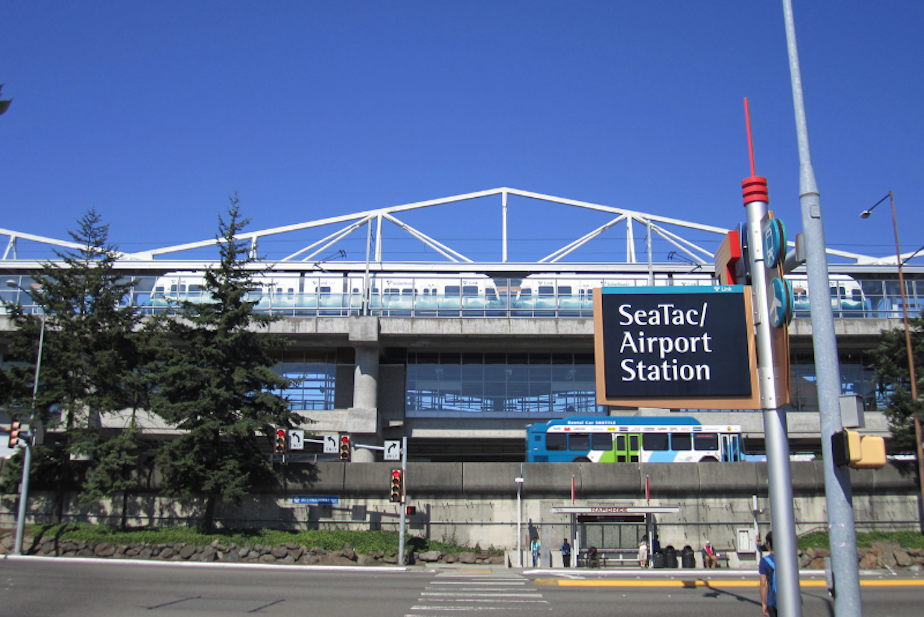King County turns to police departments to keep walkers, rollers safe on Hwy 99

In South King County, Highway 99 is even more dangerous for people on foot, on bicycles, or in wheelchairs than it is in Seattle, according to a recent data analysis by the county.
But while Seattle’s getting $50 million from the state to design structural fixes to make Aurora Avenue more accessible to people who aren’t in cars, South King County got only about $120,000 from the state, earmarked for more policing and education for drivers.
Sara Wood works with the Kent Police Department and is in charge of traffic safety in South King County. Wood, who is overseeing the state grant, said increased patrols are just a “temporary” fix. The stretch of Highway 99 between Federal Way and Tukwila is dangerous to pedestrians and cyclists due to structural reasons, she said.
“There’s half a mile or more in between marked crosswalks,” she explained. “So we see a lot of mid-block crossers, oftentimes going from one bus stop to the other side, to another bus stop … And when you have drivers speeding 60, 70, 80 miles per hour, that’s a really, really scary, dangerous situation.”
But the county isn’t putting in more crosswalks or redesigning the road to slow down traffic. Instead, officials are temporarily putting more police officers on the road.
“All of us in traffic safety will say: we can’t enforce our way out of this, right?” Wood said. “Enforcement’s not going to solve our problem. It may change a behavior of some drivers that see the officers out there for a temporary time, but not forever.”
Sponsored
The five police departments along this stretch of Highway 99 are each getting money to pay the salaries of officers who will patrol the road for two weeks. The idea is to pull over and ticket people driving, not people walking or biking. But exactly which infractions to target are up to each individual officer.
“We went through kind of an overview of the enforcement expectations — what we’re doing this for, the purpose of our funding,” Wood said. “But ... when it comes to enforcement, the officer does have some discretion.”
After the two weeks of enforcement, the county’s traffic safety task force will come back and evaluate whether people are driving more slowly and yielding more often to people walking and biking who have the right of way.
In addition to these patrols, the traffic safety grant for South King County will pay for education for law enforcement about bike and pedestrian safety.
That course will include “why [law enforcement officers] should care about walker/roller safety” as well as “what [law enforcement officers should] look for when you are out there on the roadways to help keep our walkers/rollers safe,” Wood said.
Sponsored
And the final component of the traffic safety effort is driver education: Some of the grant money will fund billboards encouraging people to drive slowly and carefully.
The idea behind that is to encourage “positive community norms,” Wood said. “All of us just want to get where we want to go safely. It’s all of our responsibilities to make that happen.”
At the end of the day, though, “it does come back to the engineering piece,” Wood said. “What we are working on is impacting what we can with the resources that we’re given.”




